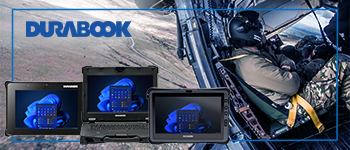Up, up and away
Richard Hjelmberg explores the current technological trends of helicopter drones
Mid-size Vertical Take-Off and Landing (VTOL) Unmanned Aircraft Systems (UAS) have increased in popularity across both military and civilian domains to such an extent that organisations are no longer questioning the need for them; but rather the question is now: how much the UASs they need can do with which sensors. New UAS applications are regularly coming to the fore, in sectors such as homeland security, law enforcement, border control, oil and gas pipeline monitoring… the list goes on. A few years ago, fixed-wing UASs would have been the only possible choice, but thanks to significant advances in technology, VTOL systems are now becoming preferable over fixed-wing options thanks to ease of deployment.
VTOL UASs have several advantages over their fixed-wing counterparts. They can hover in place and can perform agile manoeuvres in tight spaces. They can be equipped with multiple payloads, extending their range of capabilities, and they have a significantly smaller logistical footprint than fixed-wing UASs, making them easier to store and to transport – especially on ships. Equipped with the right sensors, rotary UASs enable users to gather data efficiently and cost-effectively, without the additional costs and difficulty of finding suitable hard infrastructure such as landing strips and large maintenance teams.
These benefits are reflected in the significant market values of the respective sectors. Estimates forecast that the global military UAS market will be worth $23.78 billion by 2027, while the civil UAS market had a global volume of approximately $5.5bn in 2019 alone.
Although numbers are not everything, they do represent a paradigm shift in the reliance of different companies on UASs. As we continue through into the mid-2020s, we must examine the upcoming trends in UAS usage and how helicopter UASs, and the technological innovations to come, will have an impact on both the military and civil domains in the future.
Once thought of as exclusively a military tool, unmanned aircraft systems are now widely used in civilian sectors. Two industries that are currently trialling UAS platforms are the energy and gas sectors, especially when it comes to infrastructure inspections. Their infrastructure is often spread over a vast area, be it over land or in the case of wind turbines, out at sea. To perform overland power infrastructure inspections, manned crews must fly a helicopter to remote areas, where with the help of sensors and cameras the role is to detect defects on the wires, isolators and pylons as well as inspect the vegetation growing around the power line roads.
When inspecting infrastructure out at sea, crews need to have a ship on standby to present a safe place for the helicopter to land and to provide medical assistance to the crew, if needed. This method of inspection is not only extremely time consuming and costly, but it also presents a danger to the manned crew. For decades, inspections were performed this way because there was no alternative. However, thanks to the latest technological developments, modern VTOL UASs can now be equipped with multiple sensors to look for and identify deviations in the infrastructure. LiDAR sensors, for example, enable crews to see methane leaks in real time, helping them identify where repairs are needed and ultimately to perform any maintenance efficiently. Methane is one of the world’s most pollutant substances and being able to fix leaks quickly is a big part of fighting climate change. Due to their ability to hover, rotary-wing UASs are far better suited to this task than fixed-wing platforms.
Mid-sized UASs (such as the SKELDAR V-150 and SKELDAR V-200) are, on average, 150kg heavier than the small-category UASs, offering significantly longer endurance thanks to their turbines or internal combustion engines. When power infrastructure is built offshore, it is often located in extremely windy areas. Small battery powered UASs would not be able to counter high wind speeds and strong gusts. However, mid-size UASs not only counter far stronger gusts, but they also maintain stability, crucial to performing the required inspections. The SKELDAR V-150, for example, can fly for over five hours inspecting a turbine park; a much longer time than electric multi-copters. Additionally, thanks to their higher endurance time and unmanned nature, internal combustion engine powered rotary-wing UASs are easily able to fly back to the coast instead of depending on a ship on standby, saving resources and time for the companies and keeping the employees safe. Compared with electric quadcopter, fuel-powered UASs also allow for a higher number of maintenance inspections to be performed during a flight.
Blue light forces is another sector that benefits from deploying UASs. Police forces have been exploring the use of unmanned systems for a long time. UASs provide the police with a surveillance capability that they would only otherwise have when operating a manned helicopter equipped with EO/IR cameras, combined. Unmanned Aircraft Systems can be deployed rapidly for tasks such as search and rescue, surveillance and communications extensions operations. Today, supporting search operations using UASs is not only possible thanks to powerful EO/IR sensors that are capable of visually locating a victim’s heat signature: payloads that have the possibility of geo-locating a victim’s mobile phone are also entering the civilian market and are likely to prove invaluable in future missing persons search scenarios.
It is not uncommon for the police to perform tasks where they need to maintain visual contact without approaching suspects. They may have the need to overview a large area, find people who are missing, or search for persons of interest who do not want to be found. Electric battery powered multi-copters struggle with limitations related to the power of their signal transmitters and receivers, which limits the distance they’re able to fly from the operator to just several kilometres. Forces have learned that more powerful systems that offer capabilities like that of a manned helicopter are required.
Unmanned Aircraft Systems also prove themselves to be a great tool to rely on to offer relief in the case of a disaster. This is because they can allow blue light forces and the different relevant authorities to monitor expansive areas, and they can help locate victims in the case of a natural disaster, such as a flood, a tornado or a hurricane. In the event of a nuclear plant disaster, similar to that of Chernobyl in 1986, UASs would be able to measure radiation levels and monitor any resulting fires while keeping the operators safe.
While the market for civilian UASs has grown considerably, the military market has massively driven the development of systems and technology. Navies all around the world are consistently deploying UASs to support their operations. It is no longer a question whether the different military bodies would benefit from using UASs, but rather, the question has become what sensor packages they may benefit from while having a platform that offers the possibility of rapid deployment.
Sensors are the tools that make UASs useful. A camera, an optical sensor, infrared and LiDAR are just a few of the payloads that can turn a ‘simple’ Unmanned Aircraft System into a military tool. For example, UASs equipped with telecommunications antennae are able to provide wireless communications in the case of a disaster or if the existing network becomes compromised. Using a Light Detection and Ranging (LiDAR) sensor immediately turns a UAS into a sophisticated radar, becoming a must-have tool in radar operations.
Military and naval forces need to be ready to conduct operations to support tactical or intelligence gathering missions at a moment’s notice. By deploying UASs, pilots and operators can provide real-time information without putting themselves and the troops on the ground at risk.
UASs as a technology are developing fast, but unlike many other state-of-the-art developments, UASs are very limited by regulations often preventing the possibility of sharing air space with civilian-manned aviation. Our air space has very specific regulations that must be followed at all times, for everybody’s safety. Although regulations are constantly being updated to reflect the most recent developments, because making and changing regulation is a lengthy process, it is very difficult for it to be consistently up to date. This means that in many cases, deploying UASs for many of the tasks that they are made to perform is very difficult. For example, UASs have proved to be a great surveillance tool, but can they be flown over populated areas? In simple terms, no. And this severely limits their efficacy.
However, organisations that would like to deploy UASs can follow certain steps to make the process easier. There are certain certifications, such as a Light UAS Operator Certificate (LUC), that allow UAS operators to self-certify their operations by assessing the risks themselves, avoiding the process of having to ask the Human Environment and Transport Inspectorate (ILT) for approval of the execution of flights every time they deploy their UAS. Furthermore, all systems that will be flown also need to be certified, per the Commission Implementing Regulation (CIR) EU 2019/945 & 2019/947.
During the rest of the 2020s, we will experience innovation and technological developments the likes of which we have not seen before. In the Unmanned Aircraft Systems sector the market will continue to be presented with ever improving sensors that will help our technology travel even further and become even more relevant, until it becomes a staple for supporting civilian applications such as the blue light forces and power line, turbine and pipeline inspections. As new advancements are presented and developed, the costs of UAS deployment will be reduced, making them even more efficient and available to organisations of different sizes.
Richard Hjelmberg is Vice President Business Development for UMS SKELDAR and has over 30 years of business development and sales experience within the aviation industry. He has led numerous major defence and civilian campaign programmes for Saab over the past 15 years and has a long history of working within the field of special mission aircraft such as Maritime Patrol and Surveillance Aircraft including advanced systems and logistics integration. Within UMS SKELDAR, his primary role is to lead and structure major business development campaigns.









